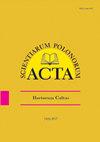胡椒薄荷的体外增殖及微繁殖与常规方法再生植株中某些生化成分的比较评价
IF 0.7
4区 农林科学
Q4 HORTICULTURE
引用次数: 1
摘要
本研究的目的是建立一种高效的薄荷离体增殖方法,并对微繁再生植株和常规再生植株中一些生化成分进行比较评价。使用普通的Murashige和Skoog (MS)基础培养基有利于诱导再生过程,接种4周后开始生长的外植体百分比为92%。在添加1 mg/L苄氨基嘌呤的MS培养基上,以节段片段作为外植体,其增殖率最高(7.12个芽/外植体),平均芽长最高(8.11 cm)。生根期不需要,芽在增殖培养基上发育成根。离体再生植株对离体条件的适应率为96%。尽管体外再生植株与常规方法存在一定差异,但结果表明,微繁繁殖可以成功地获得高质量的薄荷生物材料,这是具有治疗作用的生物活性化合物的潜在来源。本文章由计算机程序翻译,如有差异,请以英文原文为准。
In vitro multiplication of Mentha piperita L. and comparative evaluation of some biochemical compounds in plants regenerated by micropropagation and conventional method
The aim of this study was to elaborate an efficient in vitro multiplication protocol for Mentha piperita L. (peppermint) and to perform a comparative evaluation of some biochemical compounds in plants regenerated by micropropagation and conventional method. The use of a plain Murashige and Skoog (MS) basal medium favored the induction of regenerative processes, the percentage of explants that started to grow four weeks after inoculation being 92%. The highest multiplication rate (7.12 shoots/explant) and the highest average shoot length (8.11 cm) were obtained on the MS medium supplemented with 1 mg/L benzylaminopurine, when nodal fragments were used as explants. The rooting phase was not necessary, the shoots developing roots on the multiplication medium. The acclimatization rate of in vitro regenerated plants to ex vitro conditions was 96%. Although biochemical investigations revealed some differences between in vitro regenerated plants and those obtained by conventional methods, the results obtained show that micropropagation can be used successfully to obtain high-quality peppermint biological material, a potential source of bioactive compounds with therapeutic effect.
求助全文
通过发布文献求助,成功后即可免费获取论文全文。
去求助
来源期刊
CiteScore
1.30
自引率
14.30%
发文量
61
审稿时长
4-8 weeks
期刊介绍:
In Acta Scientiarum Polonorum Hortorum Cultus we publish original research papers and review articles containing new and significant information on broad aspects of horticulture and related disciplines. The papers are published in English only, in six issues yearly.

 求助内容:
求助内容: 应助结果提醒方式:
应助结果提醒方式:


